After spending all of pre-season testing and the first race weekend in Bahrain, it’s no surprise to see plenty of teams trialling new parts during Friday practice at Imola, after all Bahrain was three weeks ago which is a lifetime in F1.
While nobody deployed any revolutionary packages, the lessons learned from Bahrain have resulted in many teams making tweaks in crucial areas – in particular the floor as they continue to battle to overcome the downforce losses caused by the change in regulations.
We’ve picked out some of the key changes being trialled during Friday practice at Imola.
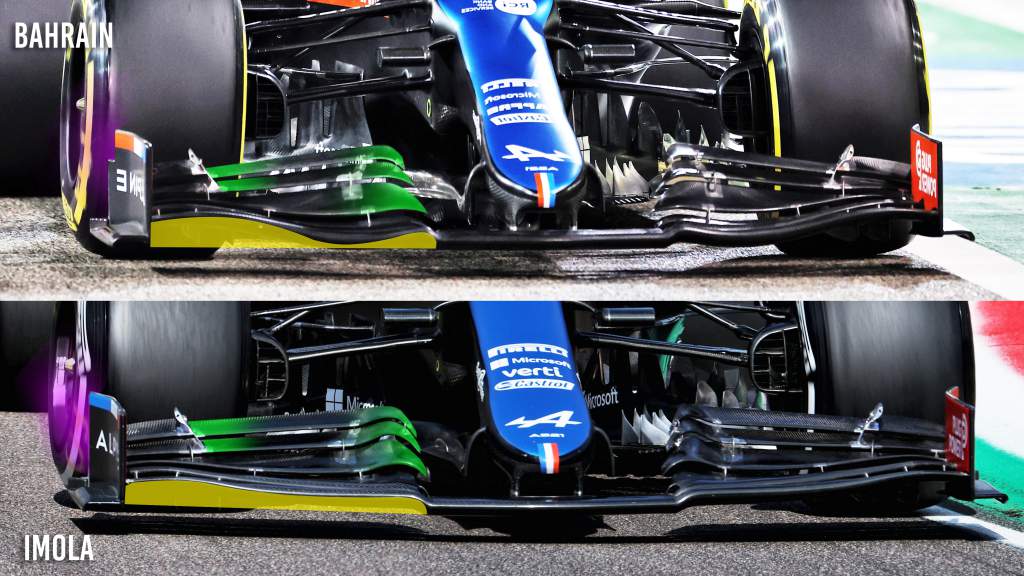
Alpine trialled a modified front wing during Friday practice, back-to-backing it with the Bahrain-specification with expectations high for a good step forward.
The sensitivity of the front wing is always about finding a compromise between producing enough front load, braking sensitivity and roll sensitivity.
What Alpine ran in Bahrain was probably a bit too far one way. It raised a large percentage of the front wing mainplane away from the ground, which meant it probably didn’t produce the overall front load required for low and medium speed corners.
With only a small section near the ground, there would be a very small reduction in the wing load due to airflow separation during braking. In effect, the car would be nervous on the brakes on corner entry with potentially more front load during a braking episode than when you need it mid-corner, which would lead to mid-corner understeer.
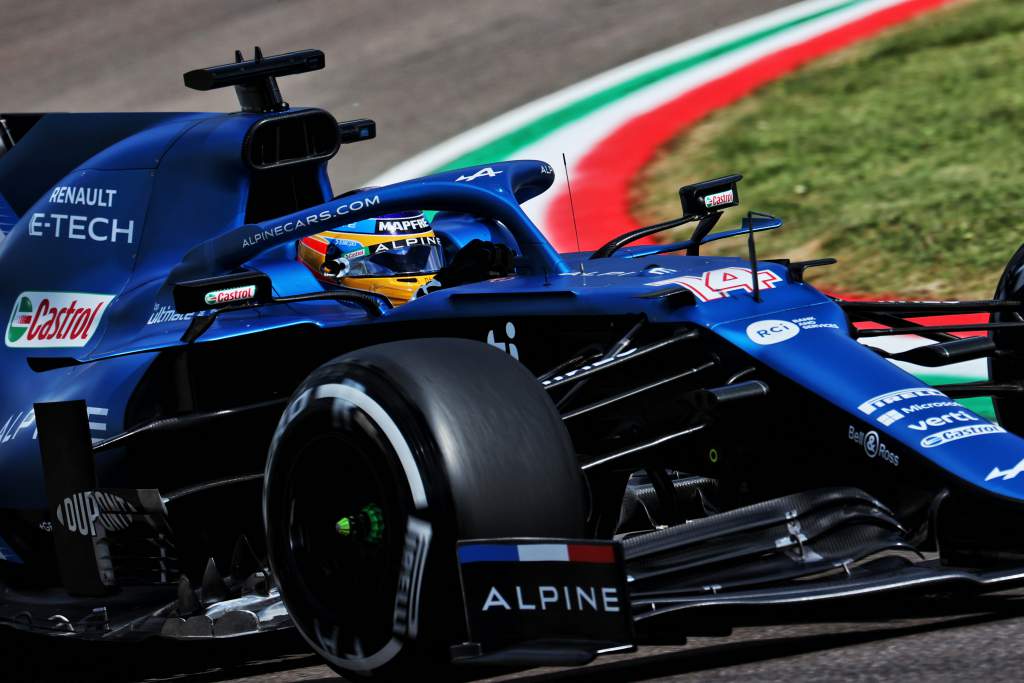
The Imola version retains the raised outer section where it meets up with the wing endplates. This means the wing won’t change too much in sensitivity when the car is in roll mid-corner.
However, lowering the inner section so it is closer to horizontal means it produces more load in general and will separate slightly more under braking. This means that the car shouldn’t be as nervous in the braking area. It is a shift back towards the mainplane shape used on last year’s Renault RS20.
Managing this separation is critical because it can very easily affect the flow to the bargeboard and leading edge of the sidepods. But what Alpine has doesn’t look too aggressive to me, and overall should give the drivers more – and more consistent – front load in slow- and medium-speed corners.
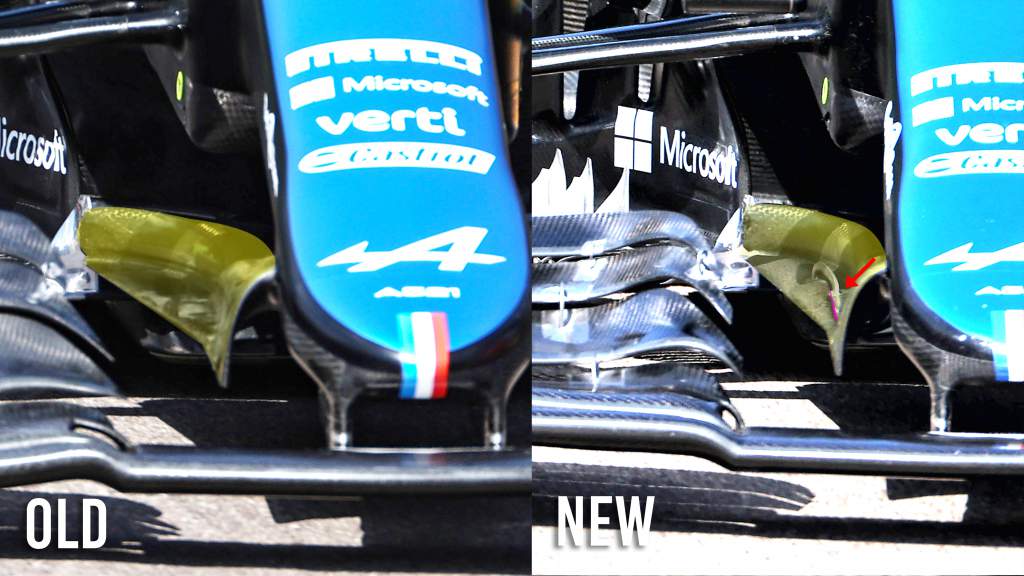
Alpine also runs an aggressive cape underneath the nose where it emerges from the front-wing mounting pillars and heads into the trailing edge at the rear of the cape.
Initially, it had more or less a hole cut in this area to allow flow through to reduce a separation problem. This hole appears to have been cut into that area fairly late in the day and might even have been done in Bahrain.
At Imola, the curvature of the cape has changed slightly. Alpine has added a turning vane halfway along the step area and that hole is now a little more sophisticated in that it is more of a slot gap on the upper edge. The team will have optimised the location and curvature of this slot to give the best flow through here.
A small airflow separation in this area can have detrimental effects to the entire undersurface of the cape, meaning that it doesn’t work as intended.
FLOOR CHANGES
It’s all about flicks and gizmos when it comes to the floors at imola. Most teams have changed a few details to better adapt to the new regulations.
There’s still controversy surrounding whether the low-rake cars like Aston Martin and Mercedes are suffering more than the high-rake, and I’m pretty sure it is the case. But then again, these regulations were put to all teams and accepted, so let’s get on with it and stop quibbling about who is right and wrong.
Ferrari
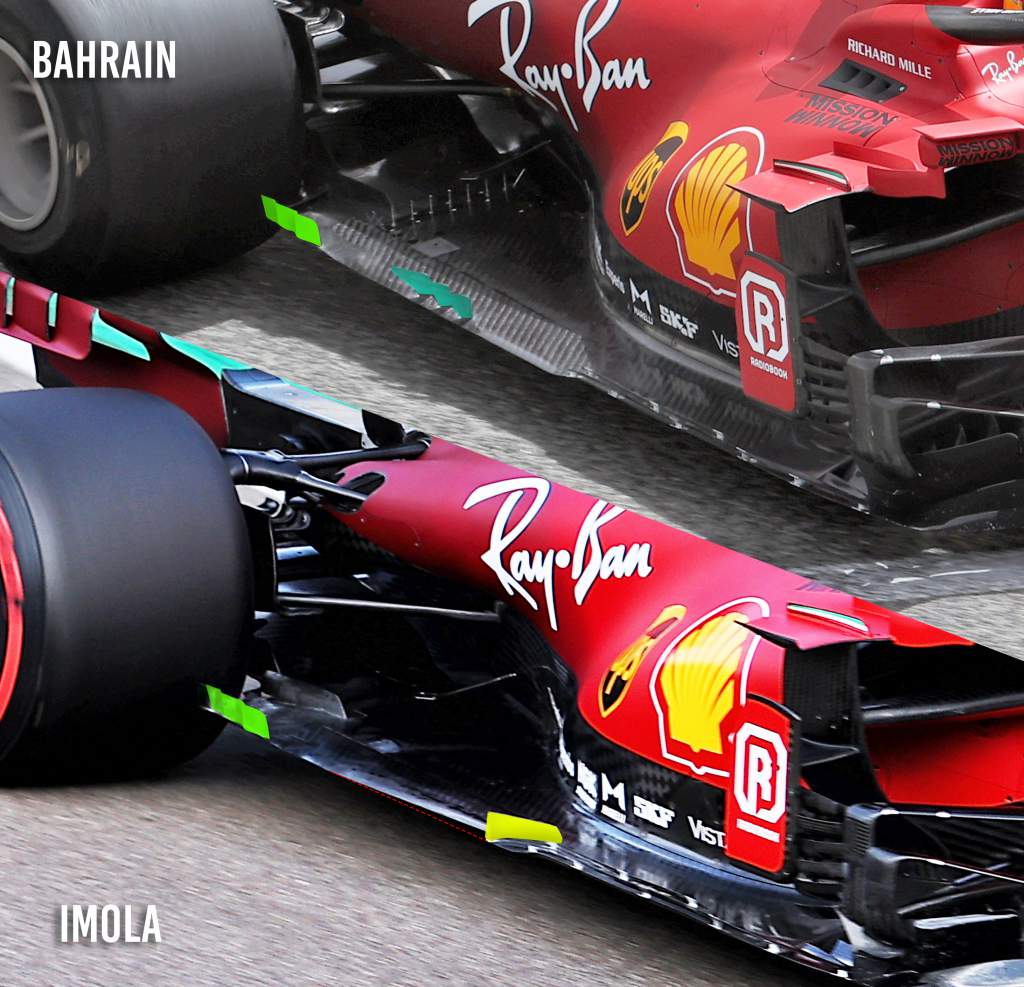
There are two key areas of the floor being developed. The first, which Ferrari has concentrated on, is to scavenge as much of the underbody airflow as possible out from the front corner of the floor, meaning the diffuser doesn’t have quite as much work to do to reduce the pressure below the rest of the underfloor.
Ferrari has added a small vertical vane (yellow) just at the rear of that front corner. It looks like Ferrari has also gone for a more square floor reduction rather than the required taper.
This also separates the front corner of the floor and the section in front of the rear tyre. It’s a small detail and I’m sure there are plenty of other small detail changes that can’t be seen.
McLaren
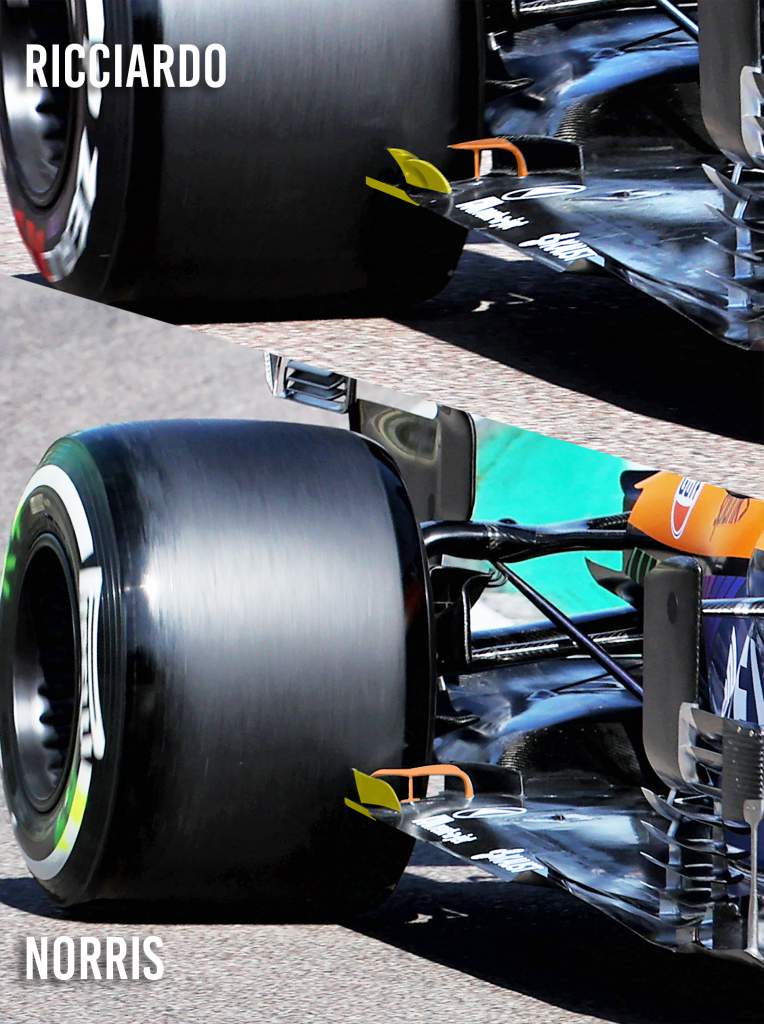
McLaren exemplifies the second development area by focusing on the area just in front of the rear tyre. It has replaced the single element vertical vane (yellow) with a three-piece component.
In doing so, the vane connecting up the airflow that is going over the top surface of the floor (orange) has been shortened.
With this set-up, McLaren is trying to turn more of the top surface flow outwards into the tyre squirt that is going outwards around the rear tyre contact patch while reducing what is going inwards.
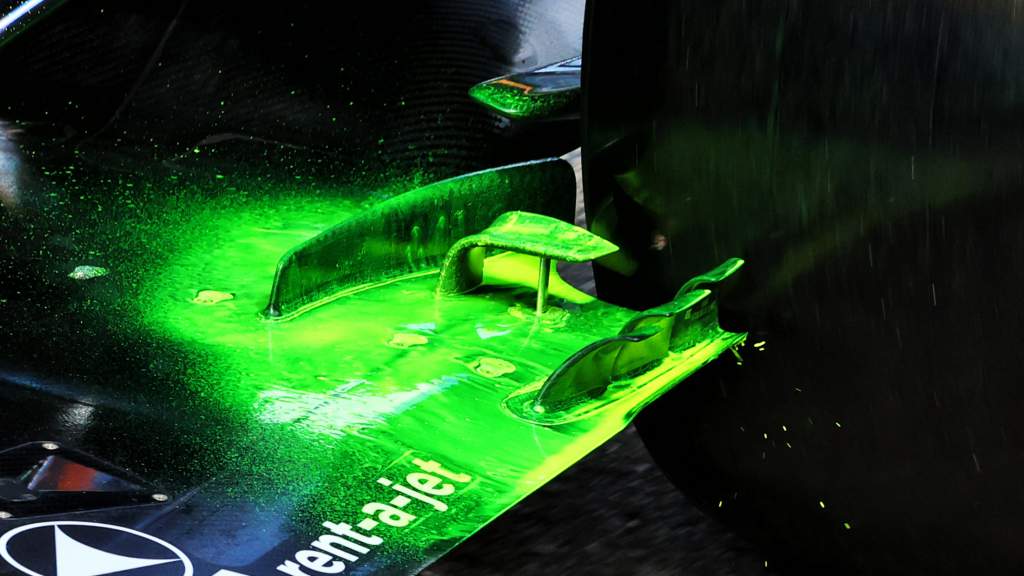
The airflow going inwards can be detrimental to the sealing of the diffuser, whereas what is sent outwards gets separated by the tyre from the low pressure in the diffuser area.
Williams
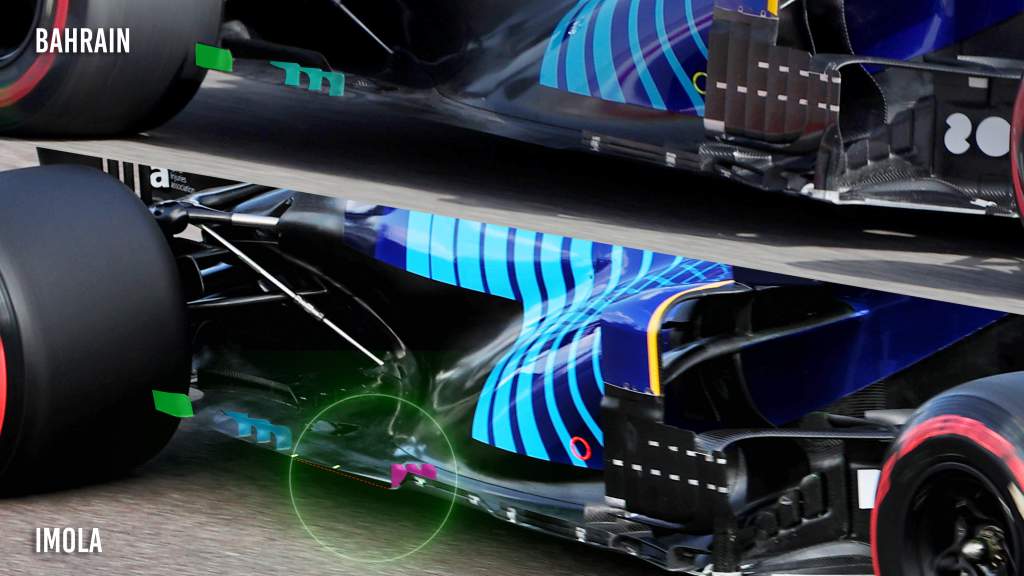
Williams has focused on the area at the trailing edge of the floor’s front corner. Adding these three small vanes (magenta) helps the airflow on the top of the floor to turn earlier,
This can be seen on the shot with the flo-vis, and this is what flo-vis is all about, helping the engineers to understand the surface airflow.
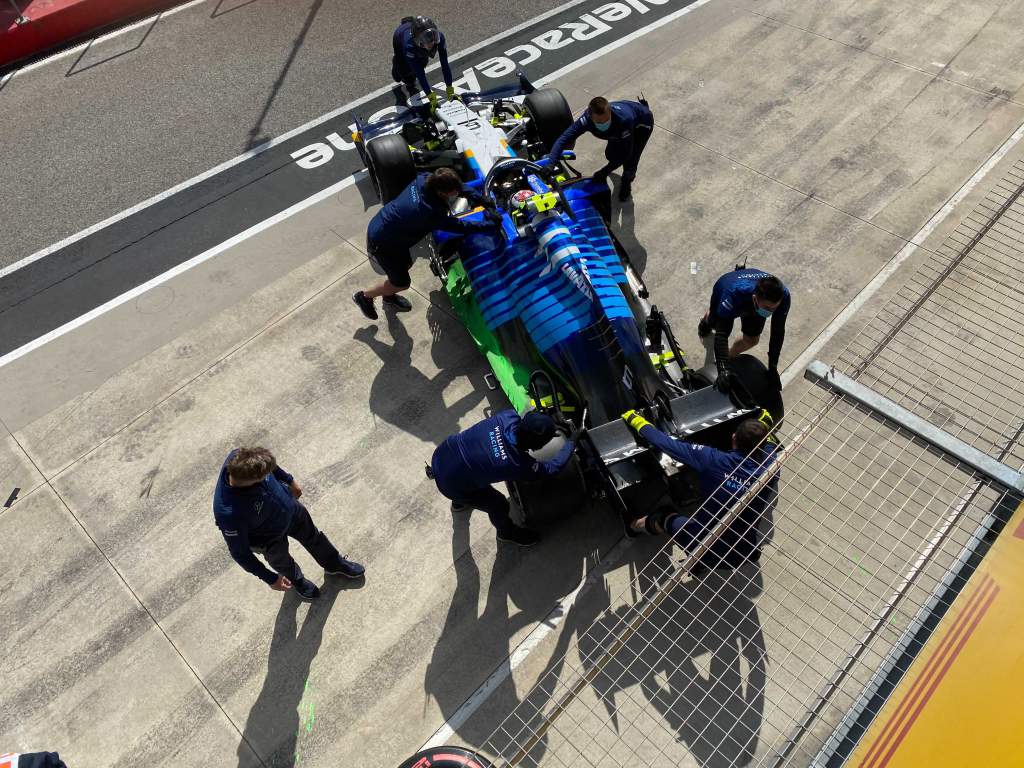
This change and the small reduction in the side of the floor area will increase the workload of the floor’s front corner while reducing the leakage going under the floor further rearward.
AlphaTauri
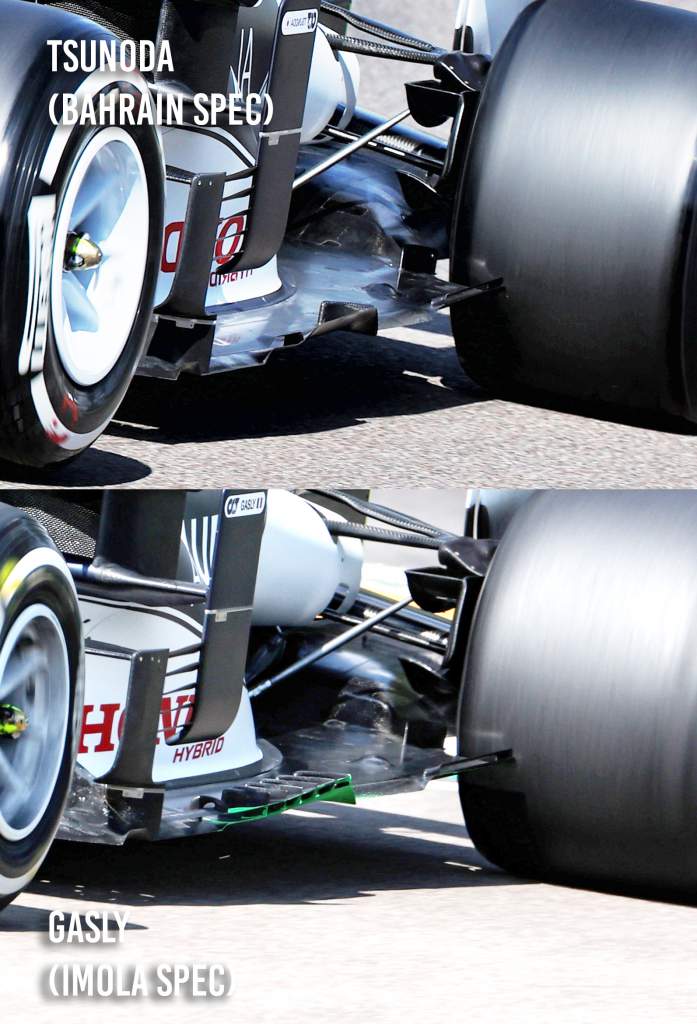
AlphaTauri has also concentrated on the outer edge of the front corner of the floor.
It has changed what was a fairly simple radiused outer edge with a turning vane at the rear of it into a multi-element outer radiused edge with multiple turning vanes.
If you get this all to work over this extended area, it will be much more powerful and improve the performance of both the front corner of the floor and, in turn, the diffuser’s performance.
ASTON MARTIN MIRRORS
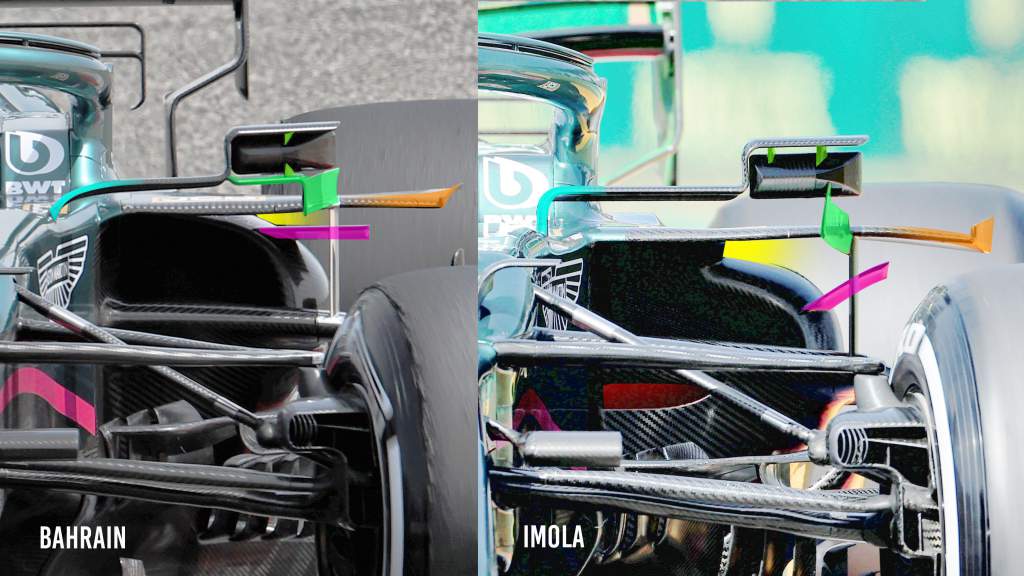
There’s nothing major on the Aston Martin, but there are modifications to the mirror mounts (green and turquoise) and the horizontal vane end detail (orange). There is also a vane emerging from the top corner of the radiator duct (magenta)
These will be to tidy up the airflow around the large radius of the top corner of the sidepod. But it’s all just detail changes so I’m not sure they will make too much difference to the car’s overall performance at a time when some big gains are needed.
On that note, I’m confused by the team’s continual criticism of the FIA and F1 when it comes to the aero changes for 2021. Yes, any change will normally suit some teams and hinder others but this is the norm.
And you can’t wait until you go racing before you call foul.

